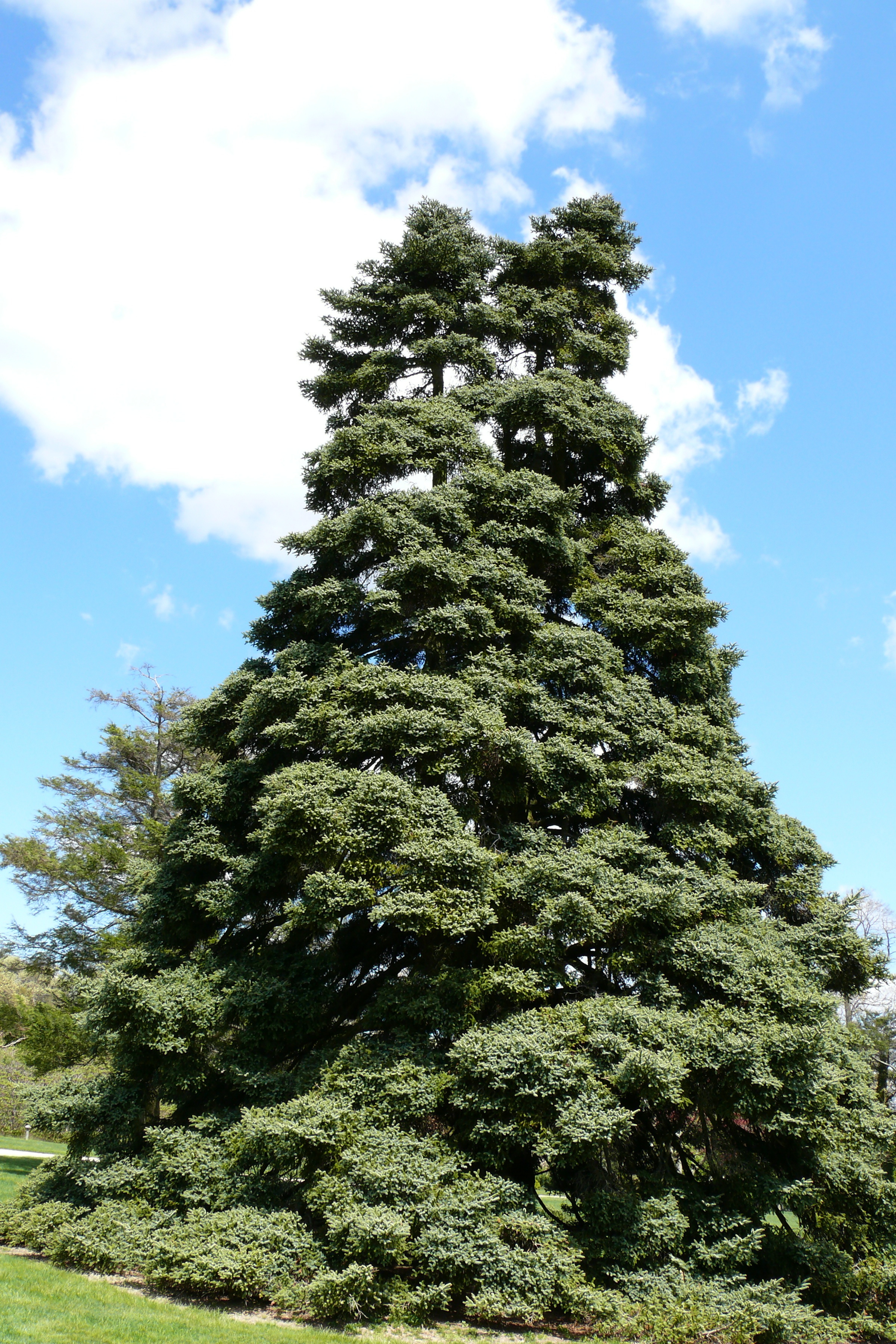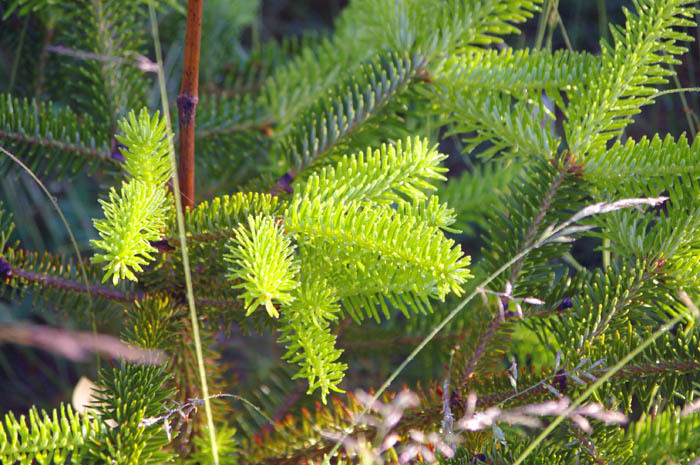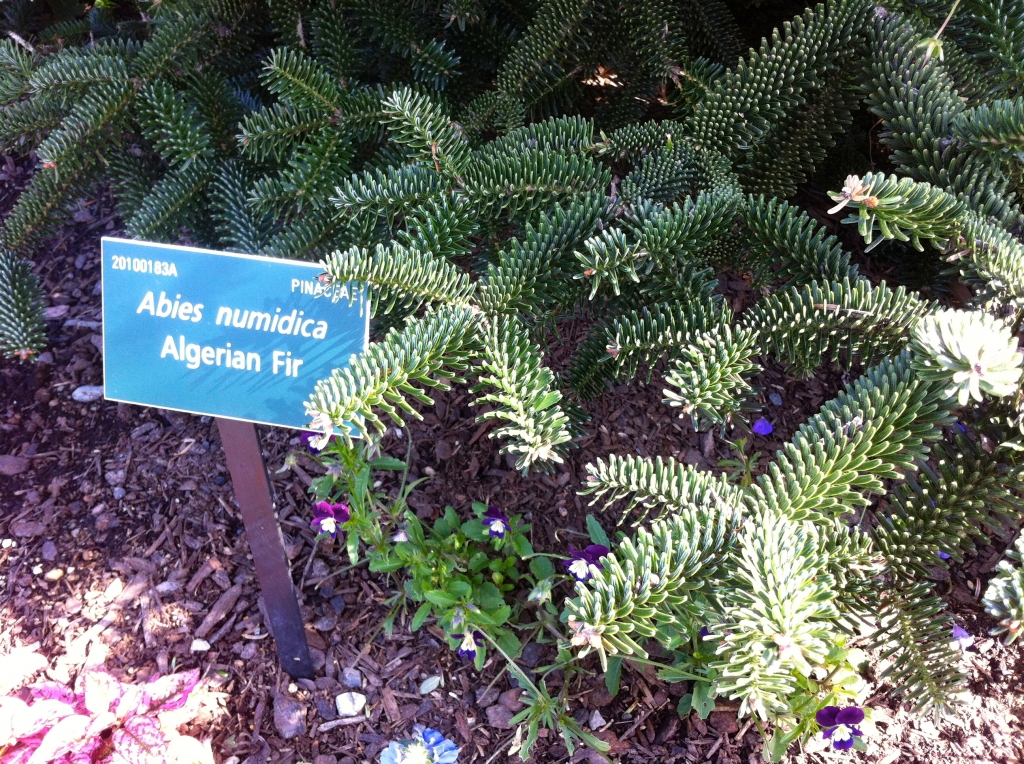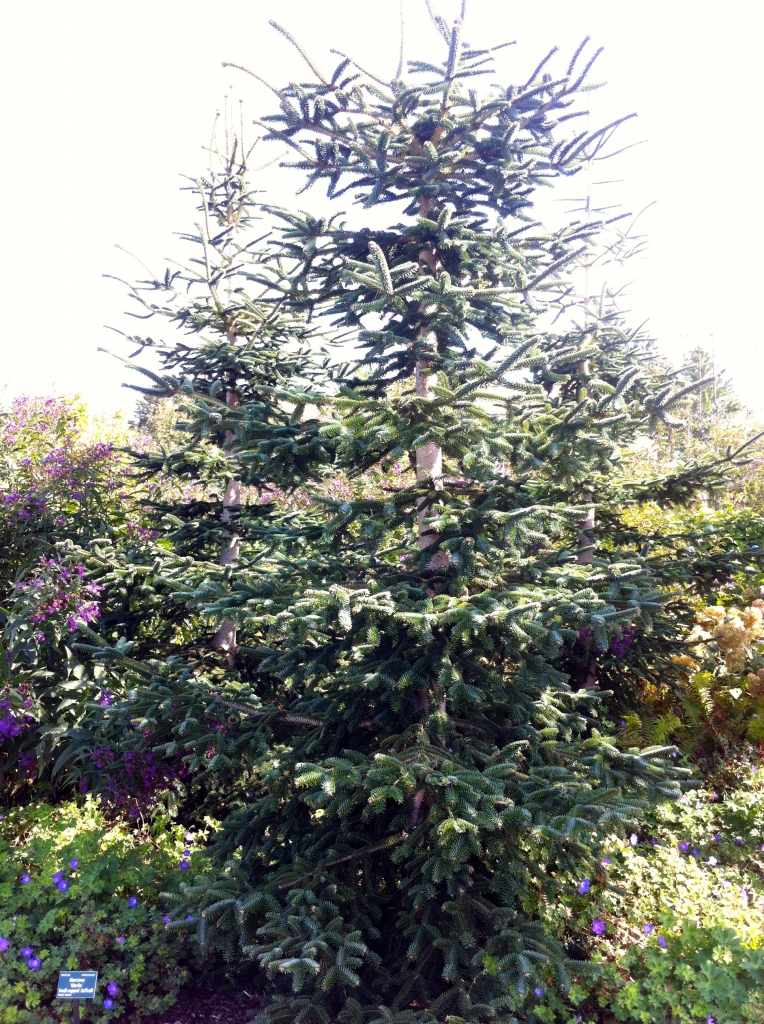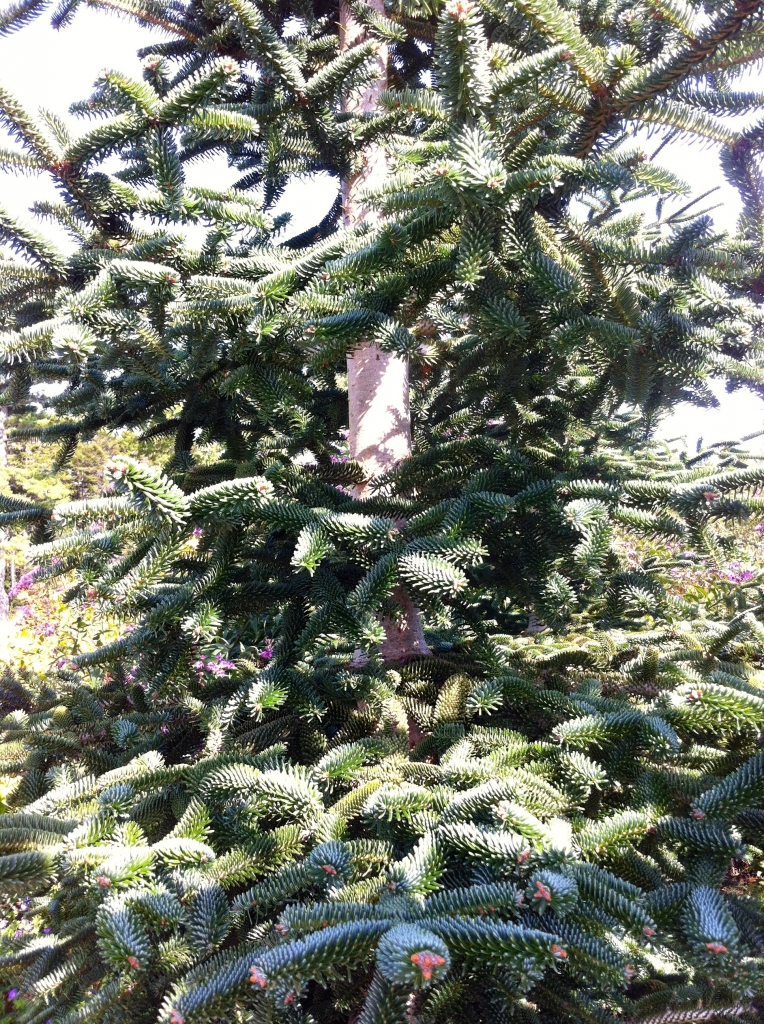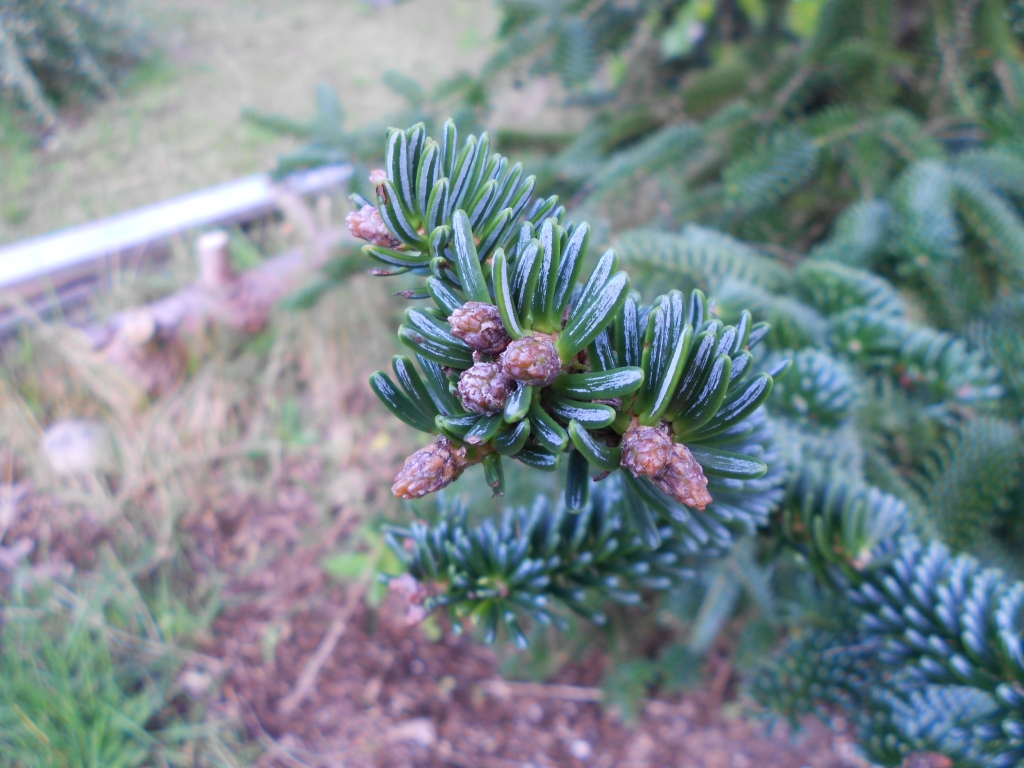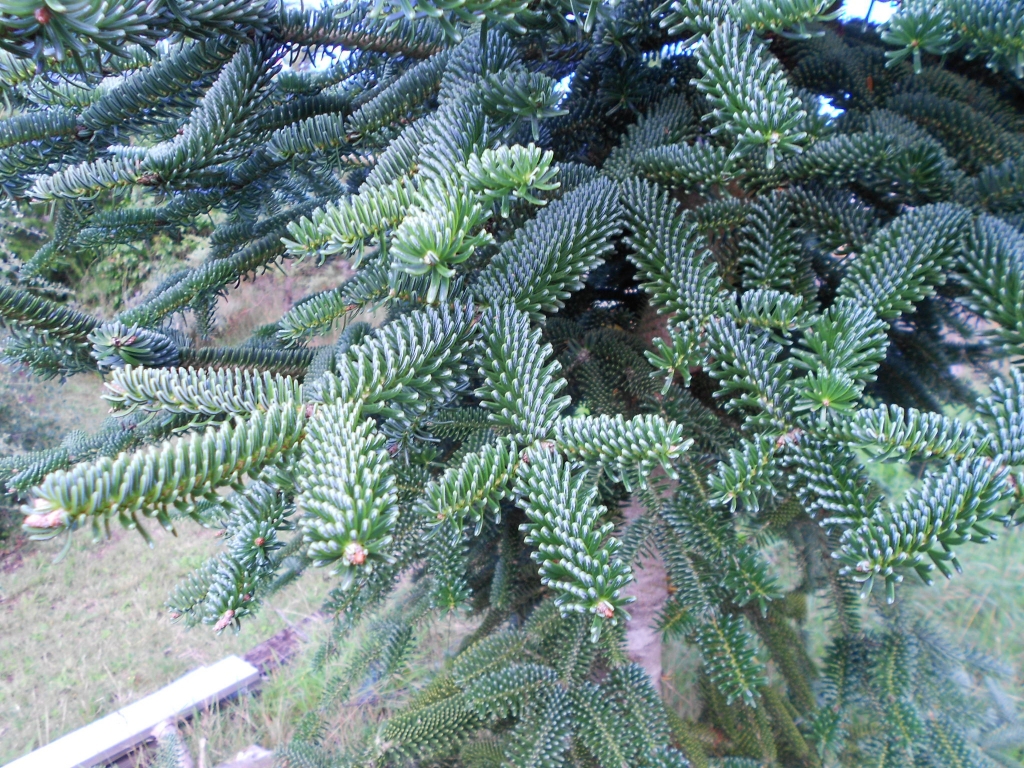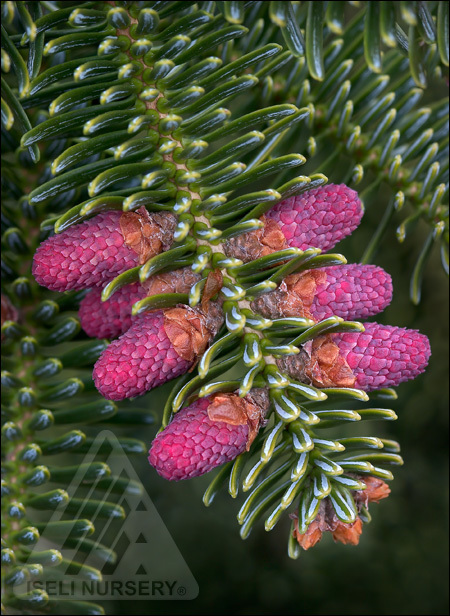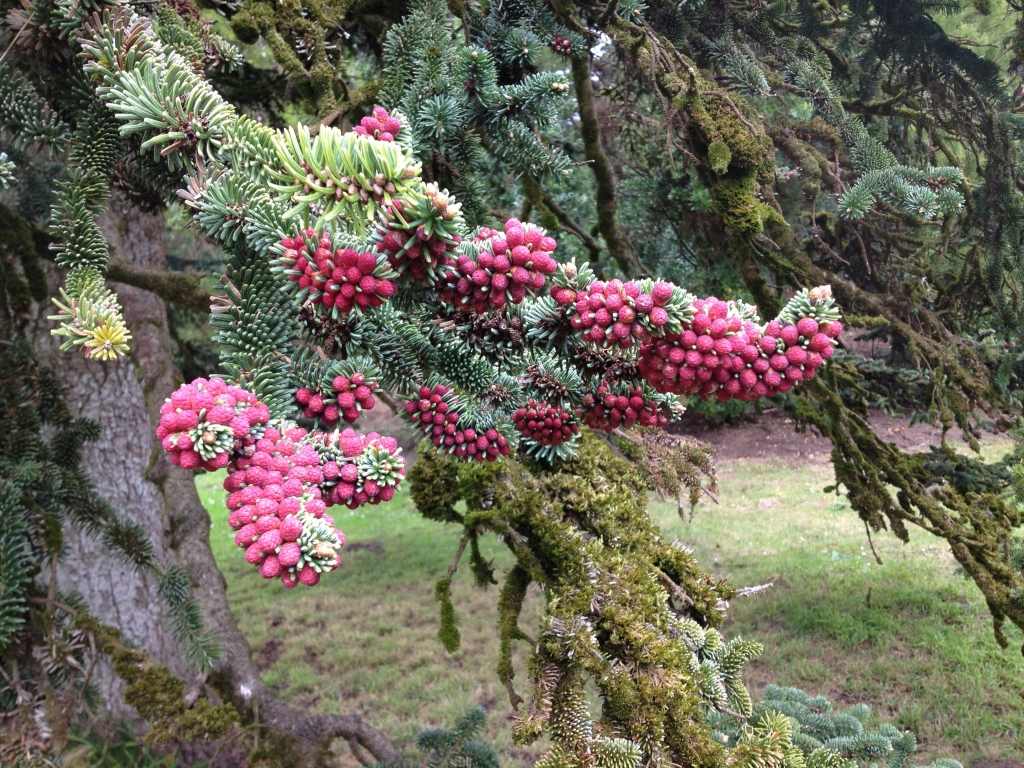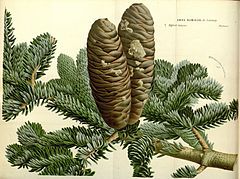
Abies numidica as described in 1866 by de Lannoy ex Carrière, in Revue Horticole (Paris) vol.37 no.106, is commonly known as Algerian fir. Synonyms include Abies pinsapo var. baborensis and Abies baborensis
Description. Algerian fir is a medium-sized to large evergreen coniferous species of tree which grows to a mature height of 65 to 115 feet (20 - 35 m) tall, with a trunk up to 3.2 feet (1 m) in diameter at breast height.
Distribution. This species is native to Algeria where it is endemic to Djebel Babor, the country's second-highest mountain at 6,500 feet (2,004 m) elevation in the Algerian Tell. It grows in a high-altitude Mediterranean climate at approximately 6,000 feet (1,800 - 2,000 m) elevation (rarely down to 1,300 feet / 1,220 m) with an annual precipitation of 50 to 60 inches (1,500 - 2,000 mm), the great majority of which falls as winter snow; the summers are warm and very dry. It is closely related to Abies pinsapo (Spanish fir), which occurs further west in the Rif mountains of Morocco and in southern Spain.
This species is popular as an ornamental tree in parks and larger gardens as it is valued among firs for its drought tolerance and attractive appearance.
